Coloristic children
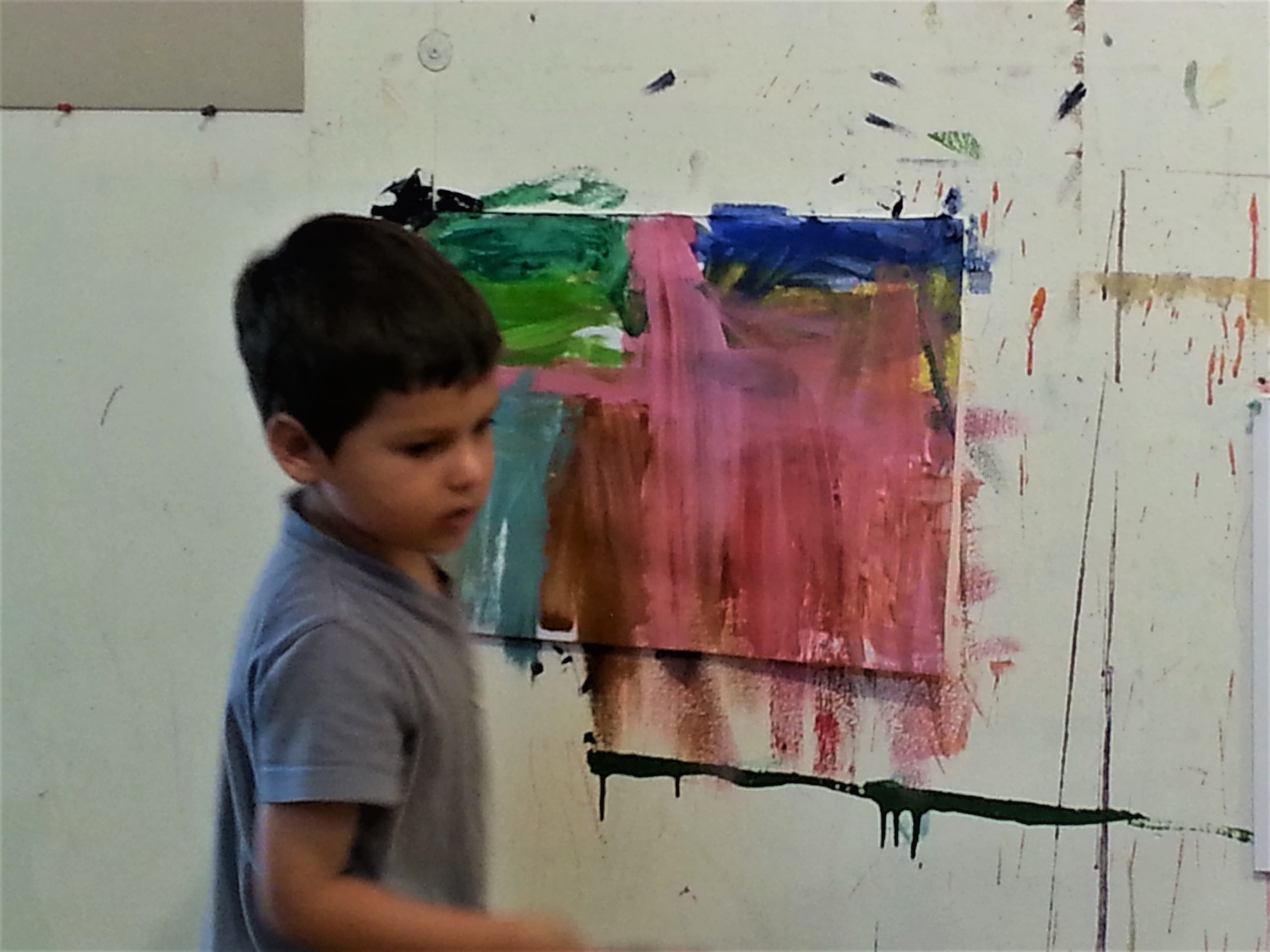
My grandchildren like to come to the studio and create. They choose what and where to work: sand tray, painting wall, large table. I am observing them or working in another corner of the studio. They are independent, and each one has personal handwriting and interests, and they respect and like each other’s work although they are different.
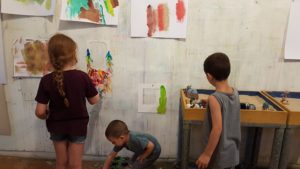
The eldest loves to mix and smear colores and is diligent and forceful in filling up pages of gouache paint.
He is a colorist child.
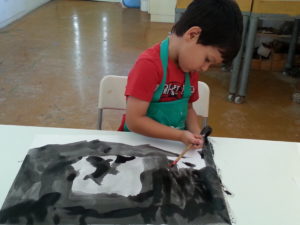
Four years old coloristic child
Coloristic children are interested in actions; They mix sensually, blend stuff, create mess and rhythms. Sometimes such processes develop into ornamentations, decorations, and patterning.
In every class, there are a few of them. Nevertheless, unlike most children, they are less concerned about images such as a house or a person.
This cognitive quality develops outside their papers!
These children sometimes find art time more difficult in kindergartens and schools – because they are not drawing images according to what society expects them to.
Kindergarten teachers and art teachers are a bit bewildered in the face of this phenomenon.
Thus, the children who paint images will be granted compliments from the kindergarten teacher and grandparents [Look, he painted a man!], while the colorists will be treated as having drawn a silly scribble. Ironically, they might call him Piccaso. The child is compared to his friends and siblings. And they sadly feel and notice it.
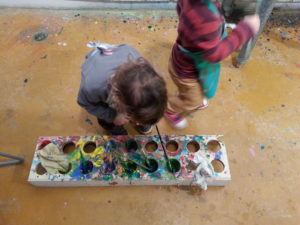
One afternoon this coloristic boy said to me:
Yael said that my painting was ugly because I was painting over the lines.
He said they all were given printed pages to fill with crayons.
What did you say to her?
I didn’t say anything.
He was quiet and sad.
How old is Yael?
Four years old.
Is she a painting teacher like Grandma?
No
So in the meantime, she knows what she knows, and I will explain to you something that you can share with her and the children in kindergarten: every child is unique, and each one paints in their favorite way. And there are also all kinds of forms of painting. Otherwise, if we were all the same, there would be no museums and exhibitions.
For example, some paintings are called “abstract paintings.” They have shapes, colors, dots, and lines but no horse, flower, or house. These are mixtures like you like to do. Your grandmother paints like that, too, and her work was even in an exhibition in a museum.
Tell Yael that you don’t have to be inside the lines if you don’t want to. Every boy and girl is the queen or king of their paper, and they decide.
Like your cousin, Yael loves to paint inside the lines, and it is wonderful – but you can do what you choose to do on your paper. There is no one painting rule for everyone.
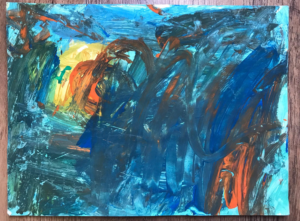
5.6 years old
On my next visit, he said that Yael from kindergarten also started covering lines in colors even though she was usually inside the lines.
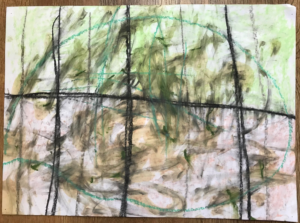
6.1 years old
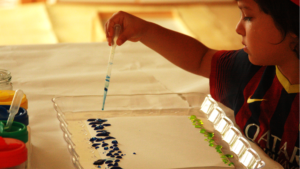
6.6 years old
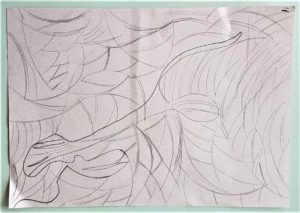
9.7 years old
He is 12 years old these days. Since he was a toddler, he was very interested in cooking, and he is also playing the drums.
Collections of rhythms in paintings and music, cutting, chopping, stirring in the kitchen make a metaphorical sense that leads to his spiritual blueprint traits.
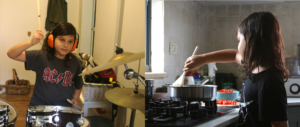
10 years old
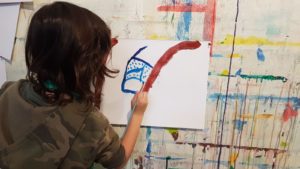
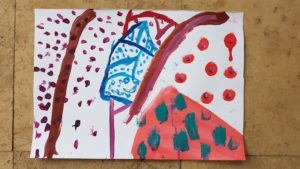
9.7 years old
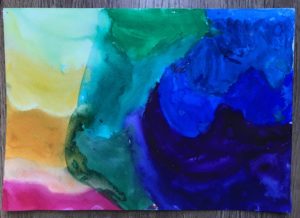
1o.6 years old
For coloristic children, the material, the sensual experiences are the heart of the process. If you know such a child, they need that reinforcement in the school system that does not respect this way of expression.
This is one of many posts for Grammar of Drawing in collaboration with Suzanne Axelsson and Roberta Pucci, where our collective wisdom will be shared.
Grammar of Drawing, Instagram Grammar of Drawing
Swedish translation Suzanne Axelsson available on Interaction Imagination
Italian translation Roberta Pucci available on Roberta Pucci Lab
Hebrew translation Nona Orbach available on The Good Enough Studio
More reading here:
Wonderful! This really resinated with me in so many ways! When I use to be a kindergarten teacher I loved the unqiness of each child and their drawings, paintings, etc.. I always embraced them. It was the pressure from my peers that did not see this suitable for the school curriculum. I left that system after only teaching in it for a few years. Now, over 25 years later, my work has been immersed in this thinking, feeling, and reacting with children, educators, and families.
Thanks for commenting, Rosalba,
If so, if you notice each child so deeply, you might be interested in the idea of the spiritual blueprint.
There is a link in the post to that notion. 🙂
https://thegoodenoughstudio.com/the-creators-spiritual-blueprint/
I can relate to this so much. I myself have always been a Coloristic person and felt out of place in school and even in Art Schools. It’s hard to explain what you have put on paper and people around keep asking you to do it. I feel I will save it and make every client and Parent that come to me read it.
Thank you for this!!
Feel free to share it with all who can benefit from it.
On my FB groups, there are many who identify with is – as you do.
I am glad I found a way to express it.